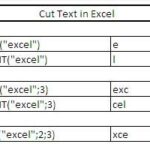Solving External Table is Not in the Expected Format in Excel
The error message “External Table is Not in the Expected Format” typically occurs in Microsoft Excel when trying to import or open data from an external source, such as an Access database, a text file, or a different Excel file. This error can be frustrating, especially when dealing with complex data sets. Understanding why this error occurs and how to resolve it is crucial for efficient data management.
Why Does This Error Occur?
This error can be caused by various factors:
- File Format Mismatch: The file you’re trying to open or import may not be in a format that Excel recognizes or expects. For example, trying to open a CSV file as an Excel workbook can trigger this error.
- Corrupted or Damaged File: If the external data source file is corrupted or damaged, Excel may be unable to read it properly.
- Invalid Connection Parameters: Erroneous connection strings or settings during database or external source data import can result in format discrepancies.
- Office Compatibility Issues: Sometimes, compatibility issues between different versions of Office can cause this error, especially if the file was created in a newer version but is being opened in an older one.
How to Fix the Error?
- Check the File Format: Ensure the file format is compatible with Excel. For example, if it’s a CSV file, try opening it as a CSV rather than an Excel workbook.
- Open the File Directly in Excel: Instead of importing, try opening the file directly with Excel. Go to File > Open and select the file.
- Repair the File: If the file is corrupted, use Excel’s Open and Repair feature. Go to File > Open, select the file, click the arrow next to the Open button, and choose Open and Repair.
- When encountering this error with CSV files, verify that the delimiter (comma, semicolon, tab) matches Excel’s expected delimiter settings.
- Modify Connection Strings: If you’re importing data from a database, double-check the connection strings or settings for any errors.
- Use Data Import Wizard: Use Excel’s data import wizard for a guided process, which can help avoid format mismatches.
- For database connections, confirm that the ODBC or OLE DB drivers are correctly installed and compatible with your Excel version and the database system.
- If the external data source contains special characters or non-standard encoding, consider saving the file with UTF-8 encoding before importing into Excel.
Prevention Tips
- Consistent File Formatting: Stick to consistent file formats for data sources to minimize compatibility issues.
- Regular Backups: Regularly back up data to prevent loss due to file corruption.
- Update Regularly: Keep your version of Excel and other Office applications updated.
The “External Table is Not in the Expected Format” error in Excel can be a hindrance, but it’s often resolvable through careful checking of file formats and import methods. Understanding the nuances of Excel’s data import functionality can greatly aid in efficient and error-free data management.



